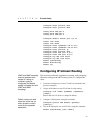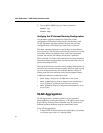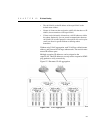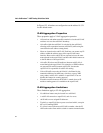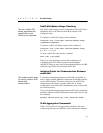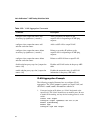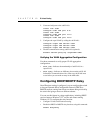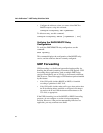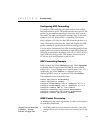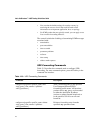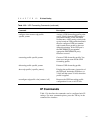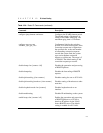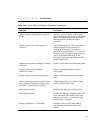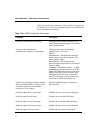
C H A P T E R 12 IP Unicast Routing
209
Configuring UDP Forwarding
To configure UDP forwarding, the you must first create a UDP-
forward destination profile. The profile describes the types of UDP
packets (by port number) that are used, and where they are to be
forwarded. You must give the profile a unique name, in the same
manner as a VLAN, protocol filter, or Spanning Tree Domain.
Next, configure a VLAN to use the UDP-forwarding profile. As a
result, all incoming traffic from the VLAN that matches the UDP
profile is handled as specified in the UDP-forwarding profile.
You can define a maximum of ten UDP-forwarding profiles. Each
named profile may contain a maximum of eight rules defining the
UDP port, and destination IP address or VLAN. A VLAN can use a
single UDP-forwarding profile. UDP packets directed toward a
VLAN use an all-ones broadcast on that VLAN.
UDP-Forwarding Example
In this example, the VLAN Marketing and the VLAN Operations
are pointed toward a specific backbone DHCP server (with IP
address 10.1.1.1) and a backup server (with IP address 10.1.1.2).
Additionally, the VLAN LabUser is configured to use any
responding DHCP server on a separate VLAN called LabSvrs.
The commands for this configuration are:
create udp-profile backbonedhcp
create udp-profile labdhcp
configure backbonedhcp add 67 ipaddress 10.1.1.1
configure backbonedhcp add 67 ipaddress 10.1.1.2
configure labdhcp add 67 vlan labsvrs
configure marketing udp-profile backbonedhcp
configure operations udp-profile backbonedhcp
configure labuser udp-profile labdhcp
ICMP Packet Processing
As ICMP packets are routed or generated, you have several options
for controlling distribution:
Access lists are described
in Chapter , "Access
Policies" on page 309.
• For ICMP packets typically generated or observed as part of the
routing function, you can assert control on a per-type, per-VLAN
basis.



